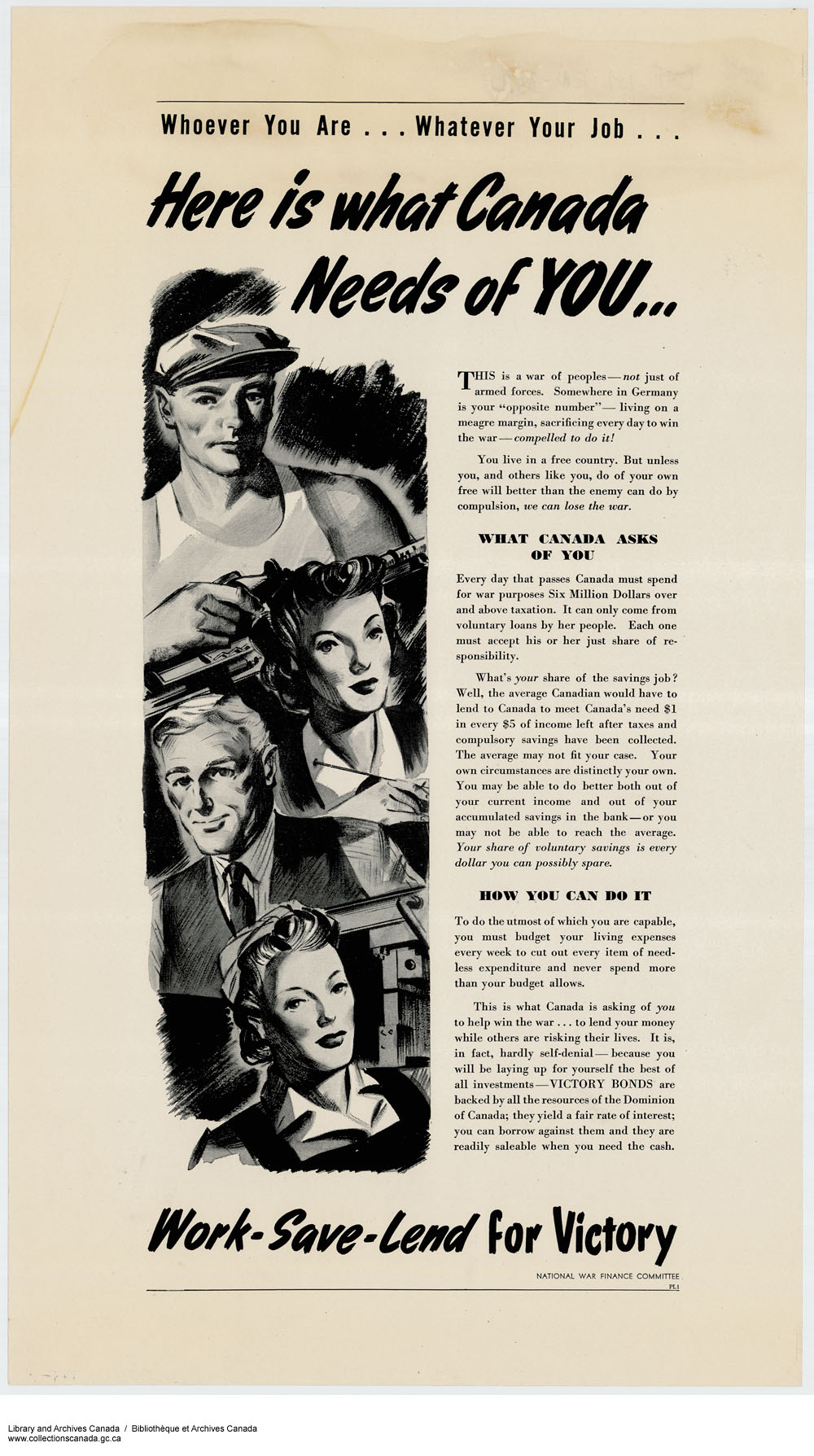By Cara Downey
Canadian knitters played a significant role in outfitting those who served in various wars, including the First and Second World Wars, as well as the Korean War. Knitters made socks, sweaters and other items for soldiers, pilots, sailors, merchant seamen, the sick and wounded, as well as prisoners of war and refugees. This work was encouraged by various volunteer groups: the Canadian Red Cross Society, the Imperial Order of the Daughters of Empire (IODE), branches of the armed services and their auxiliaries (for example, the Navy League), and others. Special patterns were printed, and the required knitting materials were distributed to volunteers. (See Shirley A. Scott, Canada Knits: Craft and Comfort in a Northern Land, pages 32 to 39)
The patterns listed strict requirements for the garments, with knitters generally requested to stick to “plain knitting” (that is, stocking stitch), since unnecessary decoration decreased speed and increased use of yarn. (Shirley A. Scott, Canada Knits: Craft and Comfort in a Northern Land, page 39)
The book Red Cross Knitting Instructions for War Work, issued by the Canadian Red Cross Society in 1940, provides further instructions:
- Knit items in specific colours, for example:
- Socks for the Navy were to be knit in navy blue or grey, Army socks in khaki, grey or “heathers,” Air Force socks in black or grey, bed socks for hospitals in white or grey;
- Toques were to be knit in navy blue for the Navy and in khaki for the Army; toques were not required for the Air Force.
- Join wool by splicing, not with knots;
- Cast on all ribbing stitches loosely;
- “Join two socks of pair together with light coloured wool pulled through two inside thicknesses of cuff. Do not knot, but tie in firm bow. Fasten one size label (on each pair of socks) on the outside on cuff, if size runs between sizes, label smaller size.” (Red Cross Knitting Instructions for War Work, pages 3, 13, and 15).

Resting but busy (e010963520)
Knitting was generally performed by women on the home front (regardless of class), children (particularly girls), as well as the sick or injured. The photo Resting but busy (dated c. 1918–1925) shows convalescing soldiers knitting as a form of relaxation and therapy.
Knitting was encouraged through various means. One example is the printed posters exhorting people to “knit for the boys.” The American Red Cross produced the poster Our Boys Need Sox, Knit Your Bit during the First World War, and Canada’s National War Finance Committee published the poster Whoever You Are … Whatever Your Job … Here is What Canada Needs of YOU … Work – Save – Lend for Victory in 1942, which included a picture of a woman knitting.

Whoever You Are … Whatever Your Job … Here is What Canada Needs of YOU … Work – Save – Lend for Victory (e010695660)
Knitting was so common during this time that it entered popular culture—in songs such as Knitting socks for Daddy’s men (published in 1915) and The pretty little mitt that Kitty knit (published in 1940)—and in books. Characters in L.M. Montgomery’s Rilla of Ingleside (published in 1921) participated in knitting circles and knitted at home to contribute to the war effort. Katherine Hale dedicated the book Grey Knitting and Other Poems (published in Toronto in 1914) to “The Women Who Knit.”
The contribution of knitters should not be dismissed. While it is difficult to count the number of items given to the diverse groups that collected goods and to know the number of individuals involved, the Canadian Red Cross estimates that a total of 750,000 volunteers knit 50 million articles (for soldiers, the sick, refugees, and others) during the Second World War alone. (Halifax Women’s History Society, “The Monument Design: The Design for The Volunteers.”) For the Scotia Chapter of the IODE during this period, this meant a contribution that included 350 pairs of socks, 525 sweaters, 125 helmets, 50 pairs of mittens, 12 pairs of gloves, and 65 scarves. (Sharon M.H. MacDonald, Hidden Costs, Hidden Labours: Women in Nova Scotia During Two World Wars, page 141)
Visit the Flickr album for more images of knitting!
Cara Downey is a senior analyst in the Governance, Liaison and Partnerships Division.



